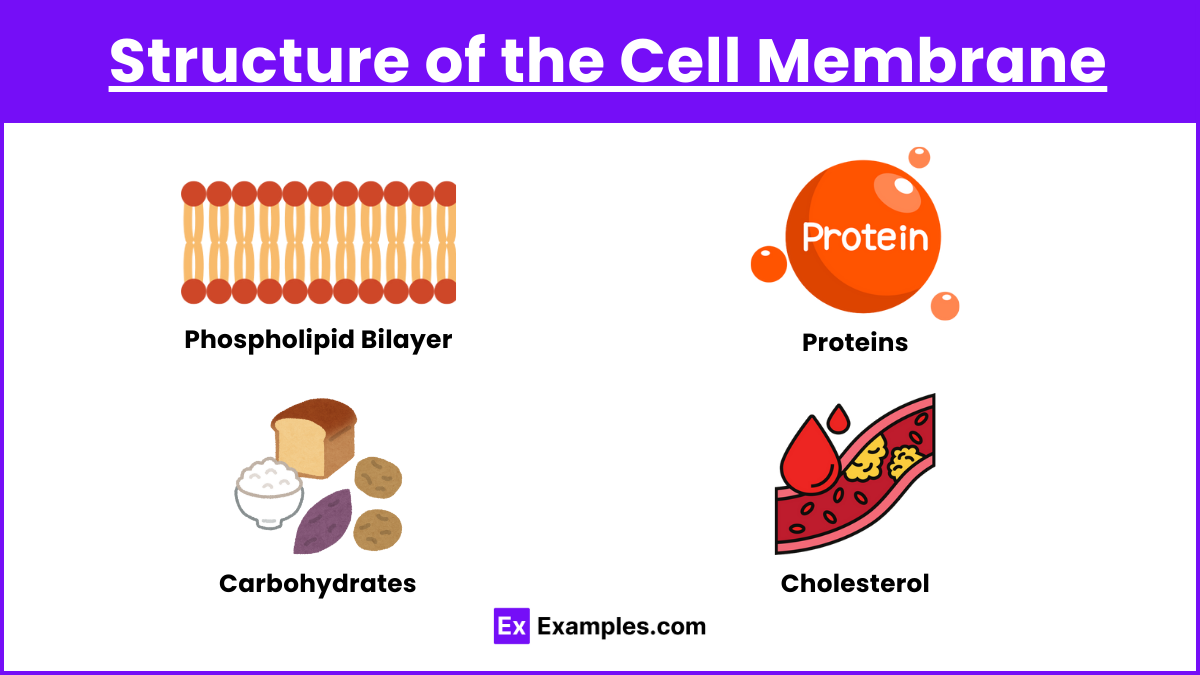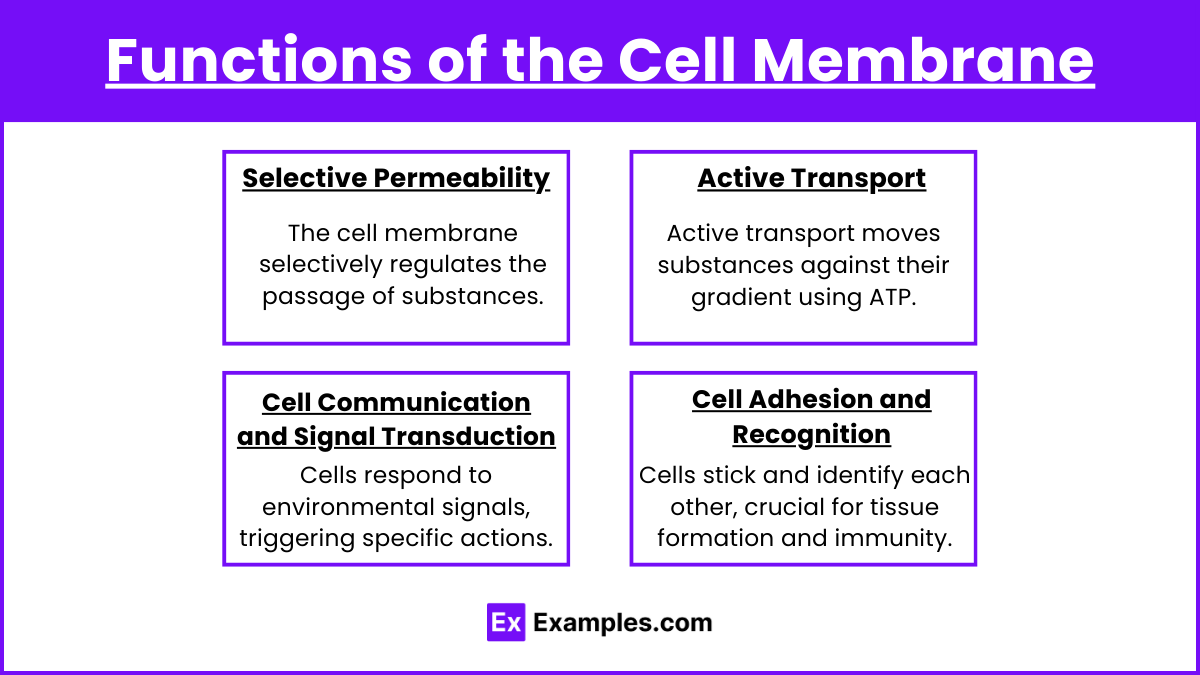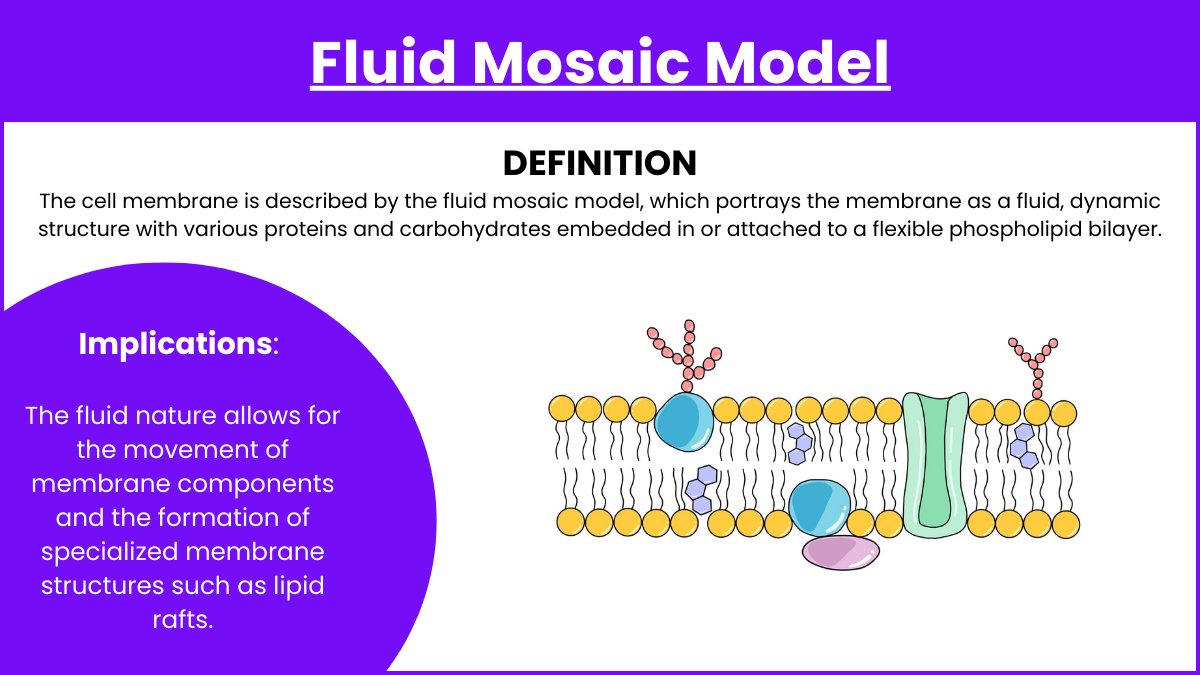In AP Biology, the cell membrane is essential for understanding cellular processes. Its unique chemical properties—comprising a phospholipid bilayer with embedded proteins, cholesterol, and carbohydrates—enable selective permeability, facilitating communication, transport, and homeostasis. Mastering the structure and function of the cell membrane is crucial for comprehending how cells interact with their environment and maintain internal balance.
Learning Objectives
Students will understand the cell membrane’s structure, including the phospholipid bilayer, proteins, cholesterol, and carbohydrates. They will learn how these chemical properties contribute to selective permeability, transport mechanisms (passive and active), and cell signaling. Emphasis will be on the fluid mosaic model and the membrane’s role in maintaining homeostasis. Mastery of these concepts is essential for understanding cellular interactions and processes in AP Biology.
Structure of the Cell Membrane

Phospholipid Bilayer
- Composition: Consists of two layers of phospholipids.
- Phospholipids: Each molecule has a hydrophilic (water-attracting) phosphate head and two hydrophobic (water-repelling) fatty acid tails.
- Arrangement: The hydrophilic heads face outward towards the water in the extracellular fluid and the cytoplasm, while the hydrophobic tails face inward, away from the water.
Proteins
- Integral Proteins: Embedded within the phospholipid bilayer. These include:
- Channel Proteins: Allow specific molecules or ions to pass through the membrane.
- Carrier Proteins: Bind to substances and help transport them across the membrane.
- Peripheral Proteins: Attached to the exterior or interior surfaces of the membrane. They often play roles in signaling or maintaining the cell’s shape.
Carbohydrates
- Glycoproteins and Glycolipids: Carbohydrates attached to proteins and lipids on the extracellular surface of the membrane.
- Function: Involved in cell recognition, signaling, and adhesion.
Cholesterol
- Location: Interspersed within the phospholipid bilayer.
- Function: Maintains membrane fluidity and stability by preventing fatty acid chains from sticking together.
Functions of the Cell Membrane

Selective Permeability
- Definition: The ability of the cell membrane to regulate the passage of substances, allowing some molecules to enter or exit while restricting others.
- Mechanisms:
- Simple Diffusion: Movement of small, nonpolar molecules (e.g., O₂, CO₂) directly through the bilayer.
- Facilitated Diffusion: Movement of larger or polar molecules (e.g., glucose, ions) through channel or carrier proteins.
- Osmosis: The diffusion of water through aquaporins or the lipid bilayer.
Active Transport
- Definition: The movement of substances against their concentration gradient, requiring energy (ATP).
- Examples:
- Sodium-Potassium Pump: Exchanges Na⁺ ions for K⁺ ions across the membrane.
- Endocytosis: The process of taking in large molecules or particles by engulfing them in vesicles.
- Phagocytosis: Engulfing large particles (“cell eating”).
- Pinocytosis: Engulfing fluids and dissolved substances (“cell drinking”).
- Receptor-Mediated Endocytosis: Specific molecules are taken in after binding to receptors on the cell surface.
- Exocytosis: The process of expelling materials from the cell by merging vesicles with the cell membrane.
Cell Communication and Signal Transduction
- Receptors: Proteins on the cell membrane bind to signaling molecules (e.g., hormones, neurotransmitters) and initiate a cellular response.
- Signal Transduction Pathways: Series of molecular events triggered by receptor-ligand binding that leads to a specific cellular response.
Cell Adhesion and Recognition
- Adhesion Molecules: Proteins that help cells stick to each other and the extracellular matrix.
- Recognition Molecules: Carbohydrates on glycoproteins and glycolipids act as markers for cellular recognition and immune response.
Fluid Mosaic Model

- Description: The cell membrane is described by the fluid mosaic model, which portrays the membrane as a fluid, dynamic structure with various proteins and carbohydrates embedded in or attached to a flexible phospholipid bilayer.
- Implications: The fluid nature allows for the movement of membrane components and the formation of specialized membrane structures such as lipid rafts.
Factors Affecting Membrane Fluidity

- Temperature: Higher temperatures increase fluidity, while lower temperatures decrease it.
- Cholesterol: Acts as a buffer, preventing too much fluidity at high temperatures and maintaining fluidity at low temperatures.
- Fatty Acid Composition: Saturated fatty acids decrease fluidity, while unsaturated fatty acids increase it.


